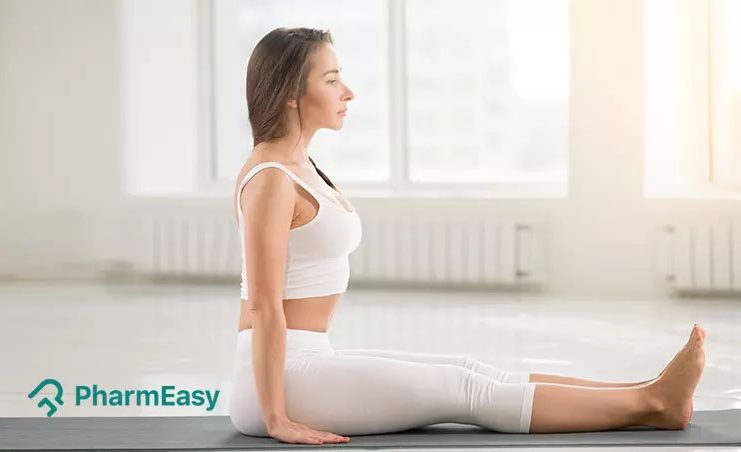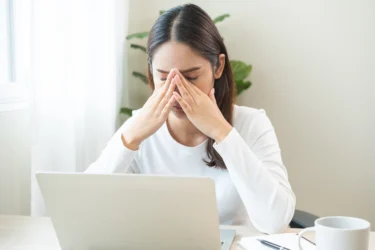Benefits of Dandasana (Staff Pose) and How to Do it By Dr. Ankit Sankhe
By Dr. Ankit Sankhe +2 more

Get,

to manage your symptom
Get your,


4 Cr+ families
benefitted

OTP sent to 9988776655



You’ve successfully subscribed to receive
doctor-approved tips on
Whatsapp

Get ready to feel your best.

Hi There,
Download the PharmEasy App now!!


Register to Avail the Offer
Send OTPBy continuing, you agree with our Privacy Policy and Terms and Conditions

Hi There,
Sign up on PharmEasy now!!
Trusted by 4 crore+ families

OTP sent to 9988776655



You have unlocked 25% off on medicines




Code: NU25
By Dr. Ankit Sankhe +2 more
Table of Contents
Yoga has become a multibillion-dollar industry. It is practiced by people from all age groups, including celebrities, bloggers, housewives, youngsters, and old-aged people. According to statistical studies, about sixteen million Americans practice yoga every year. Nowadays, several entrepreneurs have started the concept of ‘doga’ which involves the practice of yoga with their dogs. Yoga is about a mat, outfit, and centre for many people. Yoga has a deeper spiritual meaning which consists of asanas (postures) and pranayama (breathing technique) with numerous health benefits1. Let us glance through the health benefits of the dandasana yoga pose.

Did You Know?
Asanas are practiced by sitting comfortably in one position for an extended period. Certain asanas may open the energy and psychic centres in the body. Asanas may help to control the mind, body, and energy. Dandasana is one such asana that may have several benefits for the body2. ‘Danda’ means staff or stick, and ‘asana’ means pose. Hence, dandasana is also known as stick pose or staff pose. It is a seated pose, where the staff represents the straight and strong spinal column3,5.
Dandasana can be practiced in the following way:
You can do this for 20-30 seconds or 10-20 breath cycles3.
From experience, let me tell you the benefits of Dandasana! Dandasana might be your ally in belly fat loss! Studies say that regular practice of Dandasana may aid in fat loss from the belly (lower abdomen)11.
Dr. Siddharth Gupta, B.A.M.S, M.D (Ayu)
Some of the potential health benefits of dandasana are:

Guner et al. conducted a study4 in 2014 to investigate the fatigue and balance of patients with multiple sclerosis using the Fatigue Severity Scale (FSS) and Berg Balance Scale (BBS). The result suggested that the yoga protocol which includes dandasana may help to balance and reduce fatigue due to its ability to strengthen the voluntary muscles and may control the nervous system4. Further large-scale studies required to check the effect of dandasana on fatigue and balance.

A study5 conducted by Cowen et al. in 2004 showed that the practice of a yoga protocol that included dandasana might help to lower blood pressure. However, further large-scale studies are yet to be done to check the effect of dandasana on blood pressure. Therefore, you must consult your doctor in case of abnormal blood pressure. Do not self-medicate.

Regular practice of yoga, including dandasana, may help to manage stress. It may improve awareness, mental state, emotional balance, and energy. In a study5, stress was measured by the perceived stress scale, which suggested a reduction in stress levels.However, more research is needed to confirm if dandasana may help to manage stress. Therefore, you must consult your doctor if your mental well-being is hampered.

Practicing yoga which includes dandasana may relieve breast cancer complications. Dandasana may reduce pain and increase the chances of survival of people previously diagnosed with breast cancer6. However, more study is required to check if dandasana may benefit from cancer complications. You must consult your doctor if you experience discomfort after getting cured of cancer. You shall not rely on yoga and should take proper treatment.

Regular practice of yoga, including dandasana, may be beneficial for cardiac arrhythmia (irregular heartbeat). A study7 conducted by Sharma et al. in 2021 showed that the practice of yoga might be beneficial to improve heart rate and may regulate blood pressure. However, further studies are required to check if dandasana may benefit the heart. You must consult your doctor if you have any symptoms of heart disease.

A study4 conducted by Guner et al. in 2014 showed that dandasana may help to improve posture. It may help in strengthening the back muscle and stretching the shoulder and the chest. However, further studies are required to check if dandasana may help to improve posture.

A study9 conducted by Vaghela et al. in 2020 showed that regular yoga practice, including dandasana, may be beneficial for osteoarthritis. Yoga may improve the quality of life in osteoarthritis knee patients. It may reduce pain, improve knee mobility, and improve muscle strength.However, more studies are required to check if dandasana may benefit osteoarthritis. You must consult your doctor if you experience severe pain due to osteoarthritis.
Yoga practice may help in developing the mind and body. However, it is not an alternative to modern medicine. Therefore, you must not rely on yoga alone to treat any condition. Instead, please consult a qualified doctor who will be able to assess your condition correctly and advise accordingly. Moreover, it is necessary to practice and learn yoga under the supervision of a trained yoga teacher to avoid any injuries.
From my experience, I suggest you may lose excess weight and tone up your muscles by beginning a new fitness regimen including a modification of Dandasana12.
Dr. Rajeev Singh, BAMS
The risks associated with dandasana are as follows:
Dandasana is an asana that may have benefits for the body. ‘Danda’ means staff or stick, and ‘asana’ means pose. Hence, dandasana is also known as stick pose or staff pose. It is a seated pose, where the staff represents the straight and strong spinal column. Dandasana may have potential health benefits which may help to reduce fatigue and balance the body. It may help to regulate blood pressure and manage stress. Dandasana may act against cancer, spondylitis8, and osteoarthritis and improve the function of the heart. However, further studies are required to check if dandasana may benefit the mentioned diseases. You must consult your doctor if you have health issues and practice dandasana under the proper trainer.
Also Read: Benefits of Natarajasana (Dancer Pose) and How to Do it By Dr. Ankit Sankhe
Dandasana may help to reduce fatigue and balance the body. It may help to regulate blood pressure and manage stress. Dandasana may act against diseases like cancer, spondylitis8, and osteoarthritis and improve the function of the heart4,9.
Sit on the floor comfortably and stretch your legs in front of you with your feet together. Draw your buttock flesh out to the sides and feel the pressure on the bones. Balance your ankles and draw your thighs closer to the ground. Extend your heels and draw your kneecaps towards your pelvis. Lift your waist by sucking your ribs in and pulling your breastbone up. Extend the arms in the air until in line with the shoulders pulling away from the ears. Look in the front and loosen your jaw. Keep your back straight, and do not allow your abdomen to sag3.
People with wrist or lower back injuries shall refrain from doing dandasana10.
Dandasana is known as the staff pose. It is a seated pose, where the staff represents the straight and strong spinal column3.
You can do dandasana for 20-30 seconds or 10-20 breath cycles3.
Disclaimer: The information provided here is for educational/awareness purposes only and is not intended to be a substitute for medical treatment by a healthcare professional and should not be relied upon to diagnose or treat any medical condition. The reader should consult a registered medical practitioner to determine the appropriateness of the information and before consuming any medication. PharmEasy does not provide any guarantee or warranty (express or implied) regarding the accuracy, adequacy, completeness, legality, reliability or usefulness of the information; and disclaims any liability arising thereof.
Links and product recommendations in the information provided here are advertisements of third-party products available on the website. PharmEasy does not make any representation on the accuracy or suitability of such products/services. Advertisements do not influence the editorial decisions or content. The information in this blog is subject to change without notice. The authors and administrators reserve the right to modify, add, or remove content without notification. It is your responsibility to review this disclaimer regularly for any changes.
Comments

Leave your comment...
You may also like
Comments